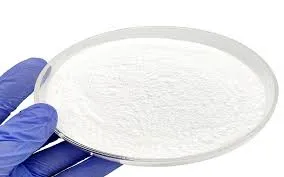Additives for Recycled Plastics Enhancing Performance and Sustainability
As the world grapples with the environmental impact of plastic waste, the recycling of plastics has become an urgent priority. Recycled plastics offer a potential solution by diverting waste from landfills, yet the performance of these materials can sometimes fall short compared to their virgin counterparts. To address this challenge, the use of additives has emerged as a pivotal strategy for enhancing the quality, functionality, and usability of recycled plastics.
Additives are substances added to materials to modify their properties and improve their performance. In the context of recycled plastics, these additives serve several critical functions. They can enhance mechanical properties, improve processing performance, and provide specific functionalities that might be lacking in recycled materials. Common types of additives include stabilizers, compatibilizers, plasticizers, impact modifiers, and colorants.
Mechanical Property Enhancement
One of the most significant challenges with recycled plastics is the potential reduction in mechanical properties, such as strength, toughness, and flexibility. The recycling process can lead to degradation of the polymer chains, which negatively impacts these properties. To combat this, mechanical additives like impact modifiers can be incorporated. These additives improve the toughness of the plastic, making it more resistant to cracking and breaking. Meanwhile, reinforcements such as glass fibers or carbon nanotubes can also be added to enhance stiffness and strength, allowing recycled plastics to be used in a broader range of applications.
Processing Performance Improvements
The processing of recycled plastics can be less consistent than that of virgin materials, sometimes leading to challenges during manufacturing. Additives such as processing aids and flow enhancers can improve the melt flow characteristics of recycled plastics, facilitating easier shaping and forming during production. These additives help in overcoming viscosity issues, ensuring smoother production processes, and resulting in higher-quality final products.
additives for recycled plastics

Facilitating Compatibility
Different types of plastics do not always mix well during recycling, which can lead to the formation of heterogeneous blends with inferior properties. Compatibilizers are additives that help improve the adhesion between dissimilar plastic types, allowing for better performance in mixtures of recycled plastics. By enhancing the compatibility between materials, these additives can enable the recycling of composite plastics, which may otherwise be infeasible, and contribute to a more circular economy for plastic materials.
Sustainability and Eco-Friendliness
In addition to improving performance, there is a growing focus on the sustainability of additives themselves. Eco-friendly additives are now being developed to minimize the environmental impact of recycling operations. Biodegradable additives can be used to enhance the environmental profile of recycled plastics, making them suitable for applications that require a lower environmental footprint. As a result, manufacturers can produce recycled plastics that not only perform well but are also aligned with sustainability goals.
Future Directions
As the demand for recycled plastics continues to grow, so does the need for innovative additives that can enhance their performance characteristics. Research in the field of polymer science is advancing rapidly, leading to the development of new types of additives tailored specifically for recycled materials. Innovations like nanomaterials and bio-based additives are paving the way for a new generation of recycled plastics that meet rigorous performance standards while supporting environmental sustainability.
In conclusion, the integration of additives into the recycling of plastics presents a promising avenue for enhancing the performance and application range of recycled materials. By focusing on mechanical properties, processing performance, compatibility, and sustainability, the use of additives can help bridge the gap between recycled and virgin plastics, making recycled materials a viable choice for manufacturers and consumers alike. As the industry evolves, continued investment in research and development will be essential to unlock the full potential of recycled plastics and contribute to a more sustainable future.

